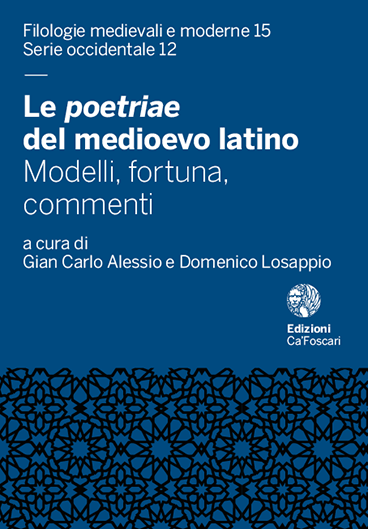- search 331 views
- file_download 21 download
- keyboard_capslock metadata
-
mark_email_readIscriviti alla newsletter
The Ars versificaria of Gervase of Melkley
Structure, Hierarchy, Borrowings
abstract
Gervase of Melkley, a younger contemporary of Geoffrey of Vinsauf, writes his De arte versificatoria et modo dictandi at the peak of a revisionary movement that places the discussions of figures and tropes inherited from classical and medieval grammatical and rhetorical traditions in new contexts, creating what we now call the Arts of Poetry and Prose. Gervase’s art draws upon the works of Matthew of Vendome, Geoffrey of Vinsauf, and Bernardus Silvestris for its doctrine and its examples. But how often does Gervase refer to these writers? How does he use their arts in his art? When does he borrow from them? What doctrine and which examples does he borrow? Does he cite his references and, if so, what are his citation practices? This chapter surveys Gervase’s borrowings from the works of Matthew, Geoffrey, and Bernardus by way of a review of the Index nominum and Index scriptorium of Hans Jurgen Graebener’s modern edition of the De arte versificatoria. The review locates Gervase’s borrowings of doctrine and examples with greater precision, and corrects errors in the indices as needed. Charting the precise citation practices of Gervase clarifies the meaning of his hierarchy of the three writers, places his long supposed use of the Poetria nova in serious doubt, and reopens the question of his art’s date.
Keywords: Bernardus Silvestris • Geoffrey of Vinsauf • Matthew of Vendome • Gervase of Melkley • Medieval poetics




